Final Fantasy Crystal Chronicles: Ring of Fates Review
Final Fantasy Crystal Chronicles: Ring of Fates
The Final Fantasy series has definitely found a home on the DS, but how does the latest installment stack up?
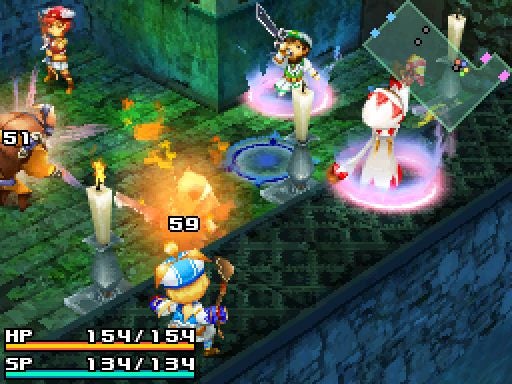
Verdict
Key Specifications
- Review Price: £23.95
”’Platform: Nintendo DS”’
It’s safe to say that the biggest name in Japanese RPGs has whole-heartedly adopted the DS. Little more than a month after Final Fantasy XII: Revenant Wings we get a new FF branded game for Nintendo’s handheld money-maker, I mean games platform, and that’s with one FF remake (FFIII) already out and another (FFIV) on its way. On top of that we’ve recently had Dragon Quest Monsters: Joker and we can soon expect Final Fantasy Tactics A2 and The World Ends with You. That little selection covers traditional RPGs, strategy RPGs and now, with Final Fantasy Crystal Chronicles: Ring of Fates, the action RPG hybrid. 
For those of you with a reasonable memory, the Crystal Chronicles moniker may be familiar. Some of you – well, maybe one of you – may even have played the original GameCube Crystal Chronicles as it was intended: with four friends, four GBA link cables and four Gameboy Advances. In which case you should, I’m reliably informed, have enjoyed a great little multiplayer game. The surprise with Ring of Fates, then, is that it isn’t a multiplayer focused title. While it has a multiplayer option and takes certain game mechanics from the first Crystal Chronicles game, it’s primarily a single-player effort.
The good news is that it’s a surprisingly satisfying game. The one person I know who played Crystal Chronicles assures me that it was excellent when played with mates but a total waste of time played on your tod. Ring of Fates plays more like a traditional action RPG. In fact, at first it plays like a slightly clichéd and simplistic one. Your protagonists are pre-teen twins with (yawn) untapped powers who (sigh) find themselves caught up in a battle over some (are we done yet?) crystals of awesome power. If you haven’t seen this one already, you’ve obviously never played an RPG. 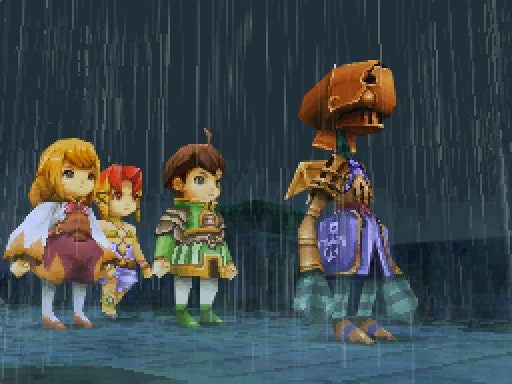
If there’s little inventive about the plot, at first the same seems true of the gameplay. Bar the odd lavish pre-rendered sequence, in-engine cut-scenes drag the player from one dungeon area to the next – though these ‘dungeons’ may include crumbling city districts, tangled forests or icy mountain peaks – where the twins, represented as one figure, wander around whacking the local monster population with the best available sharp object. After the first section the game then throws in a basic magic system, whereby magical spheres with various properties can be lobbed at friend or foe to heal or harm respectively. Kids may well get it straight away, but anyone over the age of twelve might not be so enthralled – particularly as the general tone and style seems aimed at a younger age group.
Give it time, however, and Ring of Fates blossoms into a rather more interesting game. Like Legend of Zelda: The Phantom Hourglass it still plays to the playground crowd, but the gameplay evolves to make it an engaging title for older players as well. First it throws in a system of tribe abilities. Each character in the game belongs to a particular tribe, and each tribe can harness particular powers through the medium of drawing on the DS touchscreen. Next, it adds secondary heroes, allowing you to switch between the twins and their allies using a quick-switch bar on the touchscreen. 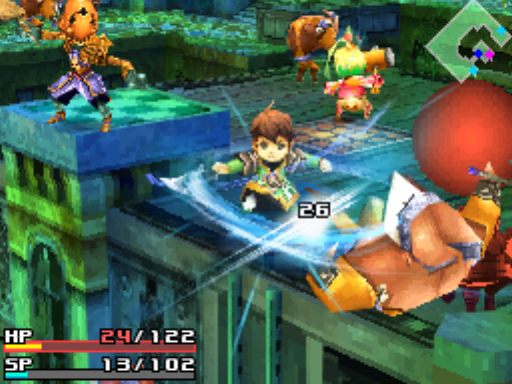
Having managed that, it starts combining these abilities with switches, floating platforms and other objects dotted around the level – not to mention the ability to stack spells by casting them on top of each other – to create some pretty interesting puzzles. Finally, it even throws in one of the simplest and most intuitive item crafting systems I’ve ever seen in an RPG. Just collect all the items the monsters drop then take them to the workshop in the big city and there’s no need to pony up the dough for shop-bought weapons; you can have them made better at a fraction of the price.
Another point in Ring of Fates’s favour is that it’s one of the most attractive action RPGs on the system. Earlier efforts favoured 2D graphics over proper 3D visuals, but since the Final Fantasy III remake Square-Enix seems to have been working on its DS 3D engine, and Ring of Fates features some surprisingly detailed background scenery, some nicely animated characters and monsters and some great magical effects. If you remember the days when the shaft of light through a window was the signature Square motif, then you’ll also be glad to see them deployed so generously here. The music, meanwhile, is also better than you might expect from a handheld side-project of a major series.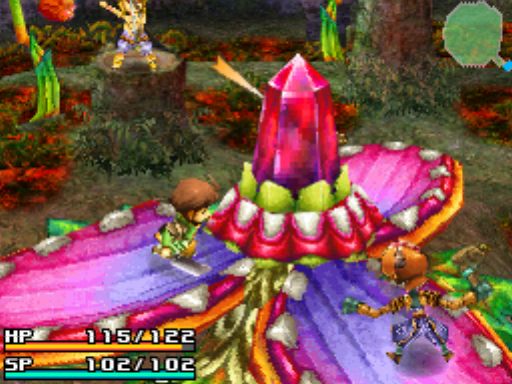
The one major downside is the AI. When not directly controlled by you, characters in the party are CPU-controlled, and the CPU either doesn’t quite understand what the job entails or can’t quite get the hang of what to do. The fact that the game features an instant recall button, which summons errant party members back to your side, speaks volumes about their navigational abilities. That, however, doesn’t solve the fact that they are shockingly useless in combat, nor does it help that having to constantly switch between characters to solve puzzles can be a bit of a chore – can’t that chap just jump on the switch or stack his spell upon yours without detailed instructions?
None of this stops Ring of Fates from being a thoroughly entertaining little time-waster. Yet it could have been so much more than that had only the multiplayer option measured up. The first disappointment is that you need one cartridge for each player to enjoy the game. The second is that you can’t play over the Nintendo Wi-Fi Connection – you can swap the charming little cat-like creatures called Moogles, but that’s as far as online gaming goes. 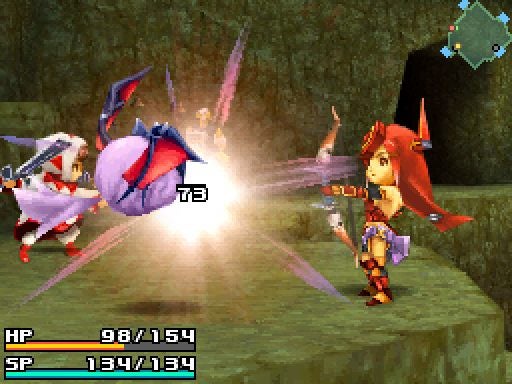
The most serious issue, however, is that even if you can get together one to three friends with their own copies of the game, you still can’t play through a proper storyline together. Instead, you’re limited to fighting through maps from the single-player game or specially created challenges where you’re battering baddies or clicking switches within a strict time limit. Don’t get me wrong: these can be fun. What’s more, the different tribes allow you to create a balanced party, while levelling characters and upgrading equipment is always a bit addictive. All the same, you can’t help feeling that you’d rather play together through a proper story-based campaign.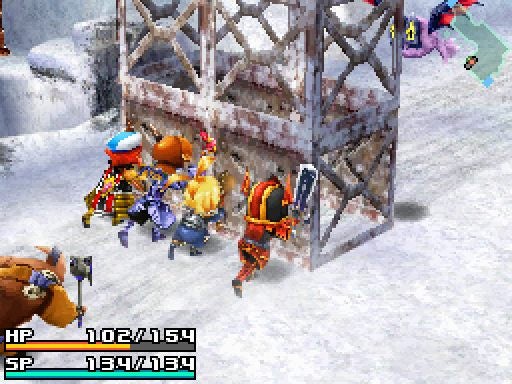
Still, even with its drawbacks it’s easy to recommend Ring of Fates to anyone who wants a decent DS dungeon crawl, or anyone looking for a game that could introduce the kids to the genre. I’d love to see Square take this engine, create a stronger multiplayer story and add in single-cartridge or Wi-Fi connection play, but I won’t get too caught up on that wish-list. Ring of Fates has a broader appeal than the more serious Revenant Wings, and makes a great way to fritter away a few hours on your DS.
”’Verdict”’
The AI may be frustrating and the style can be cloyingly cute, but this engaging action RPG is perfect for a quick fix of fantasy on the road. Sadly the multiplayer options are a little disappointing.

